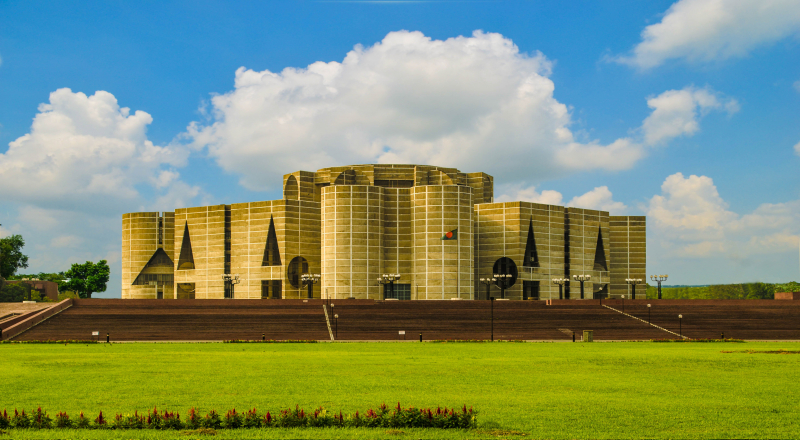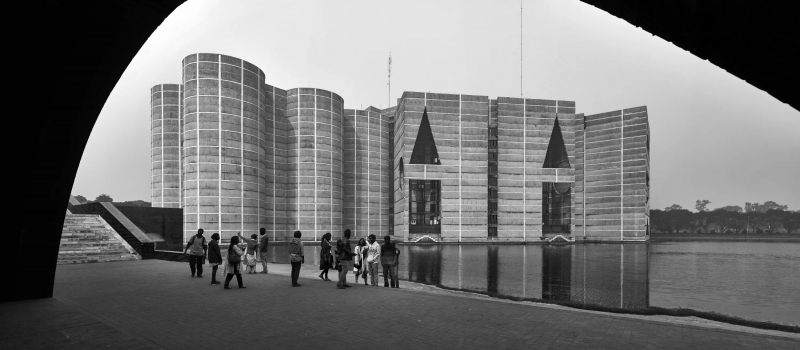Bangladesh National Parliament

The National Parliament House, or Jatiyo Sangsad Bhaban, is located in Dhaka, Bangladesh. It was constructed by architect Louis Kahn and is one of the world's largest parliamentary complexes. It houses all of Bangladesh's parliamentary activities. This structure is an outstanding example of modern architecture being translated into Bangali folk architecture.
The National Assembly building, completed in 1982, is not only one of Kahn's most notable works, but also a significant monument to Bangladesh's government. The Pakistani government conceptualized the National Assembly Building in 1959 as an addition to their parliamentary headquarters. Louis Kahn was not commissioned to build the government headquarters until 1962. However, development was halted in March 1971 after Bangladesh proclaimed independence from Pakistan. Originally, Kahn wanted to construct a grandiose structure, but after Bangladesh officially declared independence from Pakistan in December 1971, the project became much more of a symbol of democracy and pride for the Bangali people. The building was finally completed in 1982 at more than double the initial estimated cost for completion at $32 million.
The building's key characteristic is its enormous presence. The massive bulk of concrete bordered with marble strips, defined by the outside wall openings and the predominance of geometric forms of circular and rectangular concrete, pays homage to the building while being compatible with the noble functions that take place inside. Kahn's goal for the parliament was to create an ideal expression for the new democracy by using flawlessly geometric shapes such as circles, half circles, squares, and triangles.
In terms of structure, there is no column inside the building. The columns have vanished within the dividing parts that have taken on the function of bearing walls. It's more like a massive mass of concrete that has been digging and moulding itself into a perfectly functional organism.
One of the most significant factors to consider during the project was shelter from the heat and severe rains while still allowing for free air movement. This was accomplished by incorporating geometric openings in the form of triangles, rectangles, circles, and arcs into the facades at grade. It avoids any standard manner of positioning the windows on the outside, as well as the limitations of a typical memorial building's composition.
Google rating: 4.7/5.0
Address: Dhaka 1207, Bangladesh
Opening Hours:
- Mon - Sun (9am - 5:30pm)
- Fri & Sat is closed
Seating Capacity: 350











